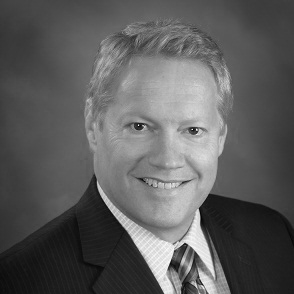
Where Have All the Doctors Gone?
Signing up for health insurance on the new state and federal exchanges was supposed to be a snap with Obama’s Affordable Care Act (ACA). While that didn’t turn out to work very well, many health policy experts appear to be more concerned about the country’s next healthcare crisis: that having coverage doesn’t guarantee patients easy access to a primary care physician (PCP). Numerous reports on the state of America’s healthcare illustrate that over the next several years we will see a growing shortage of PCPs.
According to a study by the Robert Graham Center, a leading family medicine policy research firm, the U.S. is expected to need 52,000 more primary care physicians by 2025. Federally funded programs will add at least 2,300 new primary care practitioners by the end of 2015, but the funding for at least one of those programs is set to expire at the same time, contributing to a massive shortage of doctors available to treat patients — including those newly insured through the ACA and Medicare.
What is driving the coming shortage crisis?
Population growth will drive most of the need for family care doctors, accounting for 33,000 additional physicians, the Graham Center study says. The aging population will require about 10,000 more. New sign-ups through the ACA are expected to increase the number of family doctors needed by more than 8,000, according to the study.
The growing medical needs of aging baby boomers are creating a huge burden for the existing healthcare workforce. The retirement of many doctors in the boomer legion is compounding the problem. The federal government estimates the physician supply will increase by 7% in the next 10 years; but the number of Americans over 65 will grow by about 36%, according to the U.S. Census Bureau[1].
Money is another key factor in the shortage. During the course of their careers, PCPs earn around $3.5 million less than their colleagues in specialty fields[2], which makes primary care a less appealing path for many medical students. Many of the best and brightest are choosing to pursue engineering, technology and financial services degrees, where the earnings and work/life balance are more appealing than being a doctor on 24-hour call with lower earnings potential.
Will the physician shortage crisis go beyond primary care?
While much of the discussion about the physician shortage has focused on primary care, medical experts say that specialists, too, face a critical shortage supply in the coming years.
“The looming physician shortage is not a problem restricted to primary care,” said Joshua J. Jacobs, M.D., chair of the department of orthopedic surgery at Rush University Medical Center and president of the American Academy of Orthopaedic Surgeons. “In the media, we tend to have an emphasis on the shortage of primary care physicians, but going forward, the situation can be as acute in some specialty areas.”
The Association for American Medical Colleges’ Center for Workforce Studies estimates that by 2020, the U.S. will face not only a shortage of PCPs, but will also need more than 46,000 additional surgeons and medical specialists. These estimates take into account an aging physician workforce, as well as the 15 million patients who will become eligible for Medicare and the 32 million younger patients who will become insured under the ACA.
One example of coming specialty physician shortages was presented in a report by the American Association for Hip and Knee Surgeons, which found that by 2030, the demand for total knee arthroplasty is expected to increase 17-fold for patients ages 45 to 54. The demand for primary total hip arthroplasty in the same age category is projected to grow by 600% by 2030. The report said that “the lack of orthopedic surgeons is going to be problematic for individuals who can’t get the treatment they need.”
Clinical oncologists also are concerned about how their future numbers will meet patient needs. The number of new cancer patients is projected to grow considerably as the population continues to age, said Richard L. Schilsky, M.D., chief medical officer for the American Society of Clinical Oncology. At the same time, current cancer patients are living longer and remaining in treatment for longer periods. In addition, about 50% of oncologists are expected to retire in the next 15 years[3].
How serious is the problem right now?
Today, we are short by 16,000 PCPs. Across the U.S., there are 5,800 designated primary care Health Professional Shortage Areas (HPSAs), according to 2013 U.S. Department of Heath and Human Services data. Primary care HPSAs are based on a physician to population ratio of 1 to 3,500. In addition, there are about 3,700 mental health HPSAs.
According to the Health Resources and Services Administration, the federal agency charged with improving access to healthcare, nearly 20% of Americans currently live in areas with an insufficient number of primary care doctors. Another 16% live in areas with too few dentists, and a whopping 30% are in areas that are short of mental health providers. Under federal guidelines, there should be no more than 3,500 people for each primary care provider; no more than 5,000 people for each dental provider; and no more than 30,000 people for each mental health provider.
Some Cause for Optimism
Despite the shortages, some believe that new technologies will extend the reach of medicine in ways that will help heal the problem.
For example, healthcare professionals can use tools like Skype or other telemedicine technologies to help them examine, treat, and monitor patients. Similarly, patients can be fitted with electronic devices that remind them to take their medications and provide other guidance about their conditions. These and other technologies are already keeping patients out of hospitals and doctors’ offices, while also helping reduce costs.
Changes in the way medicine is delivered, such as the use of “medical homes” and “accountable care organizations” to better coordinate patient care, are also expected to improve efficiency and keep patients out of the hospital. Some claim that these organizational changes will make PCPs more important than ever, which might make primary care a more appealing — and lucrative — career choice.
A more recent idea is to allow mid-level care providers, such as nurse practitioners, physician assistants and pharmacists to do some of the work usually reserved for doctors. Many states have passed legislation to support this move and others are evaluating similar measures. However, physician groups have shown opposition to having lower level care providers handling various aspects of patient care[4].
Health and Human Services spokeswoman, Erin Shields Britt, says continuing to build the primary care workforce will take time, but she notes that the federal budget provides several new ways to expand the primary care workforce, which includes nurse practitioners and pediatricians. Britt argues that the ACA significantly increases the number of primary care providers in underserved areas and increases Medicare and Medicaid payment for services delivered by PCPs.
Regardless of emerging technologies, telemedicine, legislation, and other proposed solutions, the reality is that we are facing the greying of America and a new generation less enthused about medicine as a career. Only one in five graduating internal medicine residents plans to go into primary care medicine, the Journal of the American Medical Association reports.
___________________
[1] U.S. Census Bureau: Projected Population of the United States, by Age and Sex: 2000 to 2050.https://www.census.gov/ipc/www/usinterimproj/natprojtab02a.pdf.
[2] Wilder V, Dodoo MS, Phillips RL Jr, Teevan B, Bazemore AW, Petterson SM, Xierali I. Income disparities shape medical student specialty choice. Am Fam Physician.
[3] Physician supply and demand: Projections to 2020, Rockville, MD, US Department of Health and Human Services
[4] Health Policy Brief: Nurse Practitioners and Primary Care, Health Affairs.
